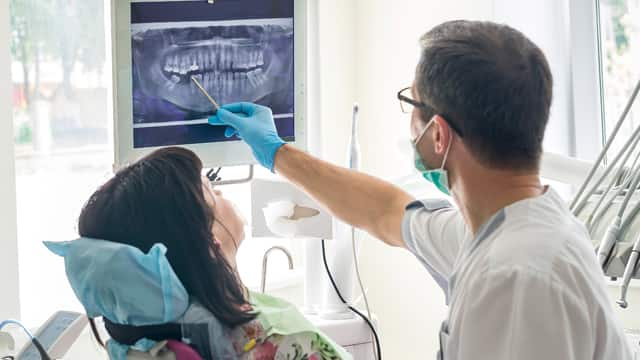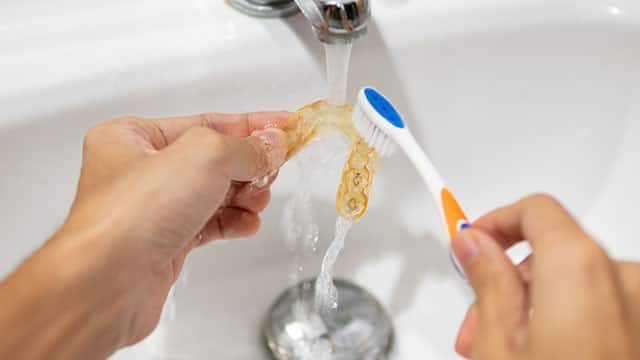What Is a Dry Socket?
When your mouth heals from tooth extraction, a blood clot forms over the extraction site. If the blood clot is dislodged or doesn't form properly, a dry socket — known as alveolar osteitis — develops. The nerve under your gum is exposed to air, bacteria, and food debris. Fortunately, dry socket is not common. According to a study in the Journal of Oral Health and Dental Management, out of 1,200 patients who had teeth extracted, only 41 of the participants experienced dry socket.
What Are the Symptoms of a Dry Socket?
According to the National Health Service (NHS), dry socket can happen three to five days following the tooth extraction. Dry socket symptoms include a dull throbbing or sharp pain at the extraction site. Contact your dentist if you start to feel this sharp or throbbing pain so they can clean the extraction site and cover the exposed nerve again.
What Makes You More Susceptible to a Dry Socket?
The extraction site may be exposed for many reasons. Sometimes even a piece of crunchy food can dislodge the blood clot over the area. However, the most common cause of a dry socket is smoking or a history of smoking within 72 hours of surgery. Post-operative instructions clearly state that smoking is not allowed in the first three days after surgery. Tobacco and other ingredients in cigarettes can interfere with clotting.
How Is a Dry Socket Treated?
Your surgeon or doctor who performed the extraction will tell you who to call if you have a dry socket. Typically, they will ask you to come back into the office for examination and treatment. The dental professional will thoroughly clean the extraction site and place a new wound dressing in the socket with a special paste designed to heal the socket.
The symptoms may disappear within as little as 24 hours after treatment because your nerve is no longer exposed. But some patients require daily appointments for an application of a new dressing until the symptoms disappear. Your dentist may prescribe a non-steroidal anti-inflammatory to help with the discomfort.
Good oral hygiene and frequent visits to the dentist and dental hygienist can help prevent any further complications from this event. Your oral surgeon or dentist may recommend an antiseptic mouthrinse to reduce the amount of bacteria around the extraction site.
Although experiencing a dry socket is an unfortunate outcome for an oral surgery patient, it can be easily treated. Contact your dental professional if you start experiencing more severe discomfort within three to five days after your tooth extraction. They can treat the dry socket and relieve your symptoms quickly and easily.
Oral Care Center articles are reviewed by an oral health medical professional. This information is for educational purposes only. This content is not intended to be a substitute for professional medical advice, diagnosis or treatment. Always seek the advice of your dentist, physician or other qualified healthcare provider.
ORAL HEALTH QUIZ
What's behind your smile?
Take our Oral Health assessment to get the most from your oral care routine
ORAL HEALTH QUIZ
What's behind your smile?
Take our Oral Health assessment to get the most from your oral care routine















